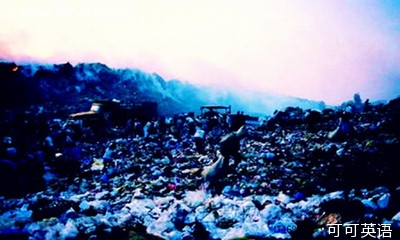Did you get a new tablet or computer this holiday season?
这个假期你是否又添置新的平板电脑或者台式机了?
A new smartphone?
抑或是一部新的智能手机?
Maybe a new TV?
还是一台新的电视?
Here's a question to tell if you're naughty or nice:
无论你老实回答还是淘气的卖萌,这里有个问题请教:
what will you do with the old one?
新的来了,旧的怎么处理?
 Most people just throw old gadgets away.
Most people just throw old gadgets away.
绝大多数人只是将旧货扔了。
That's how nearly 50 million metric tons of so-called e-waste were produced in 2012—the weight of 150 Empire State Buildings.
而就是这种废弃方式导致2012年产出近5亿吨电子废料—堪比150座帝国大厦之重。
By 2017, that flood of e-waste will grow to more than 65 million metric tons—or 11 Great Pyramids worth.
而预计到2017年,电子废料堆将超6.5亿吨—等于11座宏伟的金字塔。
That's according to a study from researchers at the UN, EPA and elsewhere.
这就是根据联合国、美国环境保保署以及其他机构进行的一项调查研究得出的结果。
Improper disposal of e-waste has led to some of the world's most toxic pollution hotspots.
电子垃圾的随意丢弃已经使得世界上的某些地区成为了重毒污染点。
It's also a waste of resources, like valuable rare earth metals.
其实它们也有废物利用的价值,比如说含有珍贵的稀有金属。
China produces the most total e-waste.
中国制造最多的电子垃圾。
But we Americans hold the title for biggest individual gadget lovers—and wasters.
但我们美国人却被授予个人电子产品最多的称号—当然电子垃圾也最多。
We produced an average of roughly 30 kilograms of e-waste per person in 2012.
我们在2012年平均每人制造大约30公斤的电子垃圾。
Impressive, given how light our gizmos are.
可见我们非常轻视这些小玩意儿。
Reuse and recycling is the obvious answer.
回收再利用是解决之道。
Good options exist, including some offered by gadget makers themselves, like Apple.
有很好的方法可以处理电子垃圾,比如苹果公司等制造商们提供了一些回收机制。
But be careful.
但要小心。
Some unscrupulous recyclers here in the U.S. simply dump the trashed gadgets overseas. And that's no gift.
在美国还有一些无良回收人士只是简单的把这些垃圾废料倒入大海。这可不是给谁送礼。
 Most people just throw old gadgets away.
Most people just throw old gadgets away. Most people just throw old gadgets away.
Most people just throw old gadgets away.